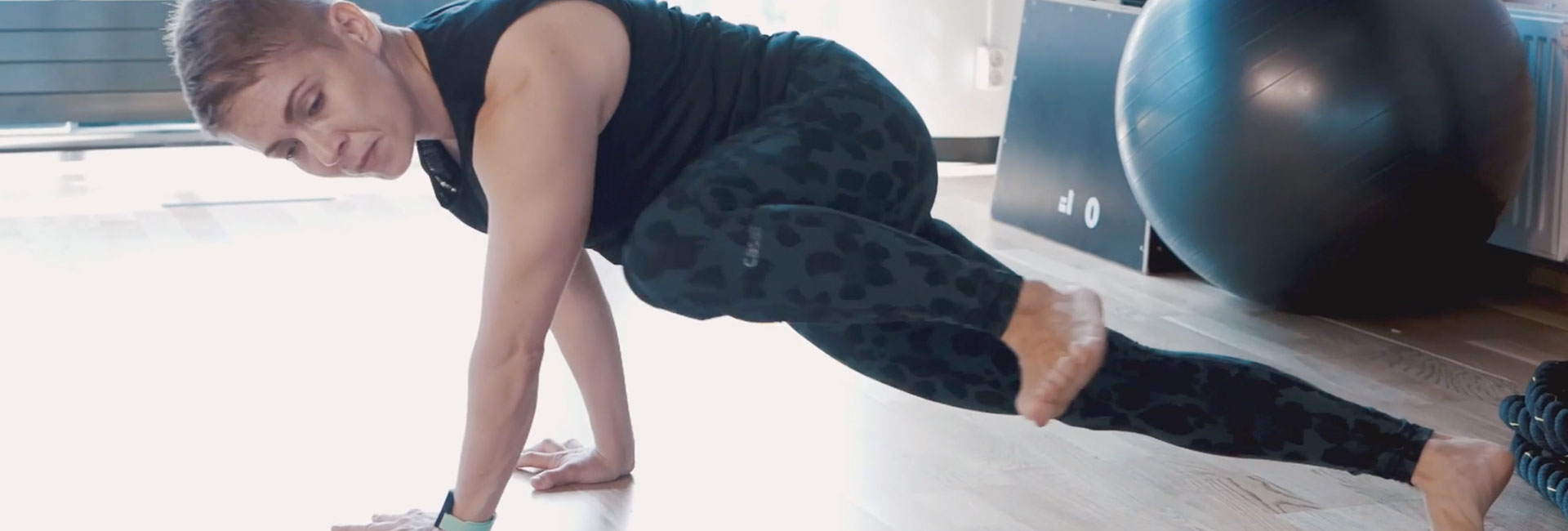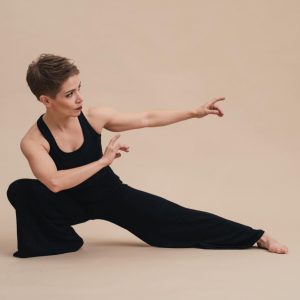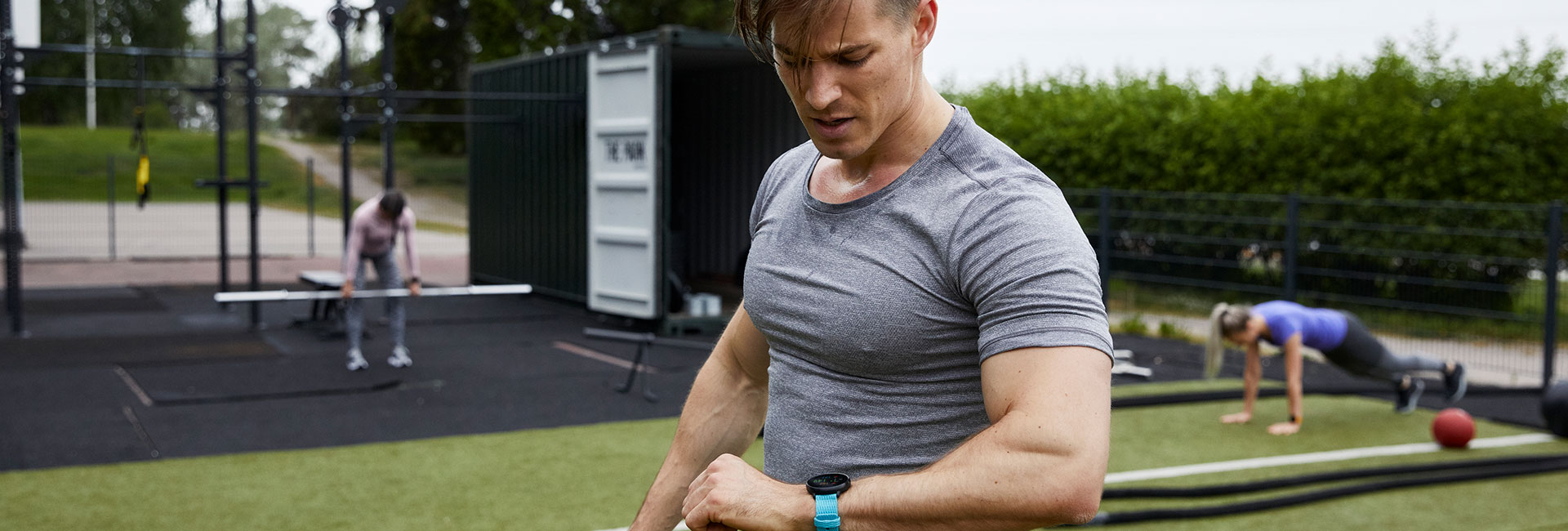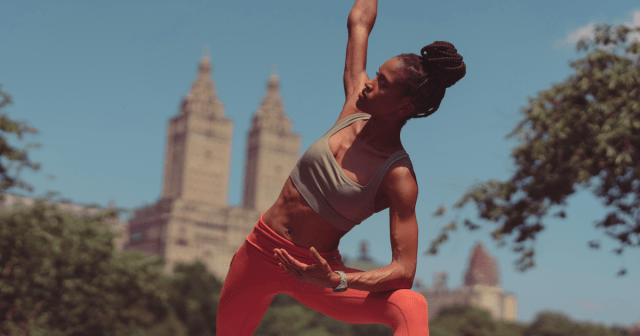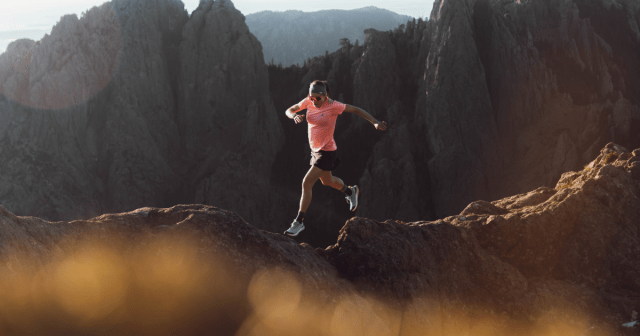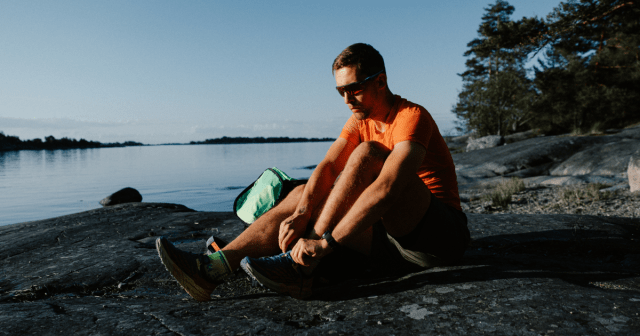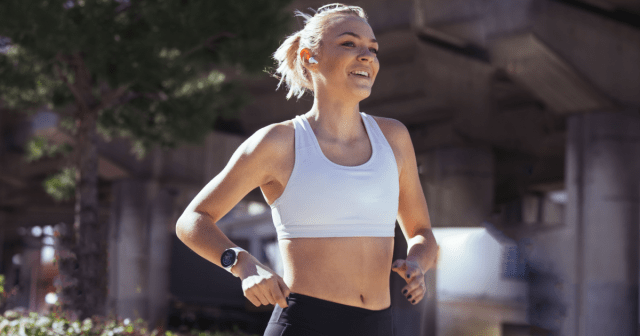Did you know that low-impact exercises don’t automatically mean low-intensity? Yes, you can make your low-impact workout effective without any jumping and still get your heart pumping. It’s all about finding the intensity level that works for you.
Looking for a follow-along home workout routine that you can stick to for more than a week? Try this one designed and instructed by Polar Master Trainer, movement coach Anniina Ala-Mattinen.
We assure you that this bodyweight workout targets all muscles. Plus, it’s enough (because you can adjust the intensity yourself) but not too much… um, for that exact same reason.
So, what’s the point of this low-impact session, and how does it work?
LOW-IMPACT EXERCISES IN A NUTSHELL
Why?
According to the Journal of Strength and Conditioning Research, a full-body aerobic resistance training circuit can yield the same endurance, cardio, and strength results as a traditional resistance workout in which the muscle groups are exerted separately.
For whom?
This low-impact workout is ideal for you if:
- You don’t have access to a gym and don’t know how to exercise without equipment.
- You’ve been told to (or you want to) avoid jumps, but you still want to get an effective workout in.
- You’re looking for a workout that you can adjust based on how you feel.
Where?
Wherever you want. You can do these low-impact exercises just about anywhere – on the patio or backyard, in the living room, you name it.
How?
This is a bodyweight workout so no equipment needed, just your amazing body.
As mentioned, low-impact doesn’t mean low-intensity nor low tempo. You can start easy and up the intensity as you go by picking up the tempo, but still keeping the impact on your joints low by avoiding jumps.
Here’s how we’ll do these integrated low-impact exercises that work on more than one area of your body at a time:
- Perform each exercise for 30 seconds.
- Rest in between rounds for 30-60 seconds.
- Do 1-3 rounds.
Let’s get to it!
Or click right through to the full workout video.
Low-Impact Exercise 1: Plank With Knee To Side
Why?
This exercise is perfect for activating and warming up your core and hip area.
How To?
Start in a high plank position with your hands and toes on the floor. Flex your core as you lift your knee to the side. Switch sides.
Low-Impact Exercise 2: Lunge Back & Forth
Why?
These lunges strengthen the lower body and build core stability.
How To?
Start in a standing position with your feet shoulder-width apart.
Step forward into a lunge position while rotating the opposite elbow towards your knee and deeply bending the knees so that your front knee is at a 90-degree angle and the back knee nearly touches the floor.
Then take the same leg into a backward lunge, then forward again, and return to the middle. Repeat on the other side.
Low-Impact Exercise 3: Plank Push-Up With Clap
Why?
This move will build your core strength and stability and strengthen your upper body.
How To?
Start in a high plank with your hands and feet shoulder-width apart and weight evenly divided between your hands and toes.
Tuck your hips, activate the core and thighs, and flatten the spine. Activate your shoulders and upper back by pushing the floor with your hands. Tilt your weight slightly more towards your hands than your toes, then lower your chest until it almost touches the floor and come back up.
Keep your core and glutes tight and make sure your forearms are next to your sides with your elbows pointing backwards (not to the sides).
Low-Impact Exercise 4: Back Extension & Release (Libra)
Why?
The Libra is great for strengthening and stabilizing the whole back, glutes, and shoulder blades.
How To?
Start in a standing position with your feet shoulder-width apart. Tuck your hips, activate the core and thighs, and flatten the spine. Extend your arms in front of you and one leg behind you simultaneously while lowering your back with a flat spine. Switch legs.
Low-Impact Exercise 5: Kick Through
Why?
Increase your agility, whole-body strength, and control with this move.
How To?
Start with your hands and toes on the floor, but knees bent and off the floor. Rotate your whole body to one side while extending your leg and lifting the opposite arm off of the floor. Return to the middle and repeat on the other side.
Low-Impact Exercise 6: Side Lunge
Why?
With the side lunge, you can work on your adductors, abductors, and spinal rotation.
How To?
Starting from a shoulder-width stance with your arms extended to both sides, take a step to the side and rotate your upper body while reaching down with your hand to touch the opposite ankle. Switch sides.
Low-Impact Exercise 7: Dip & Kick
Why?
Dipping and kicking will activate your triceps, shoulder blades, and core.
How To?
Sit on the floor with your knees bent in front of you and your hands by your hips. Make sure your fingers are facing forward. Raise your hips and then bend your elbows behind you to lower the body down while lifting one leg in front of you simultaneously. Then push back up into the starting position and bring your foot down on the floor. Switch legs.
Low-Impact Exercise 8: Ankle Touch With Squat
Why?
This move activates the whole lower body and core.
How To?
Squat and raise one knee with your foot turned outward. Repeat squat and lift the other leg forward.
WORKOUT ANYWHERE
If you’re craving some movement but don’t have access to a gym or equipment, this full-body home workout is the perfect way to build strength and endurance without equipment.
If you want to add a challenge, do more repetitions or rounds or add twists, balance challenges, or other additional elements to make the workout more demanding. Vice versa, if you need an easy day, you can slow down the pace and cut back on the reps.
Whether you work out to really get your sweat on and heart rate up or opt for a more low-intensity session, the main thing is that you move and enjoy!
If you liked this post, don’t forget to share so that others can find it, too.
Or give it a thumbs up!
I like this article
Please note that the information provided in the Polar Blog articles cannot replace individual advice from health professionals. Please consult your physician before starting a new fitness program.
